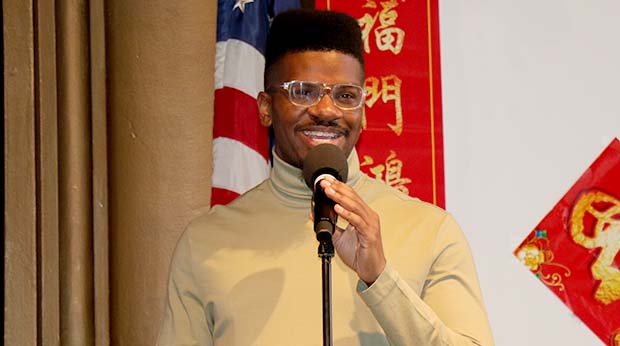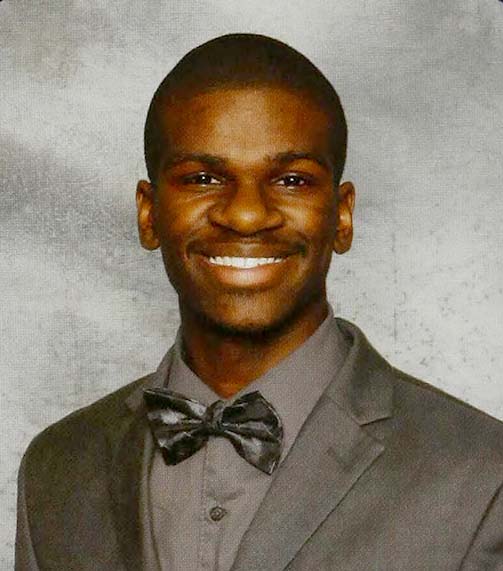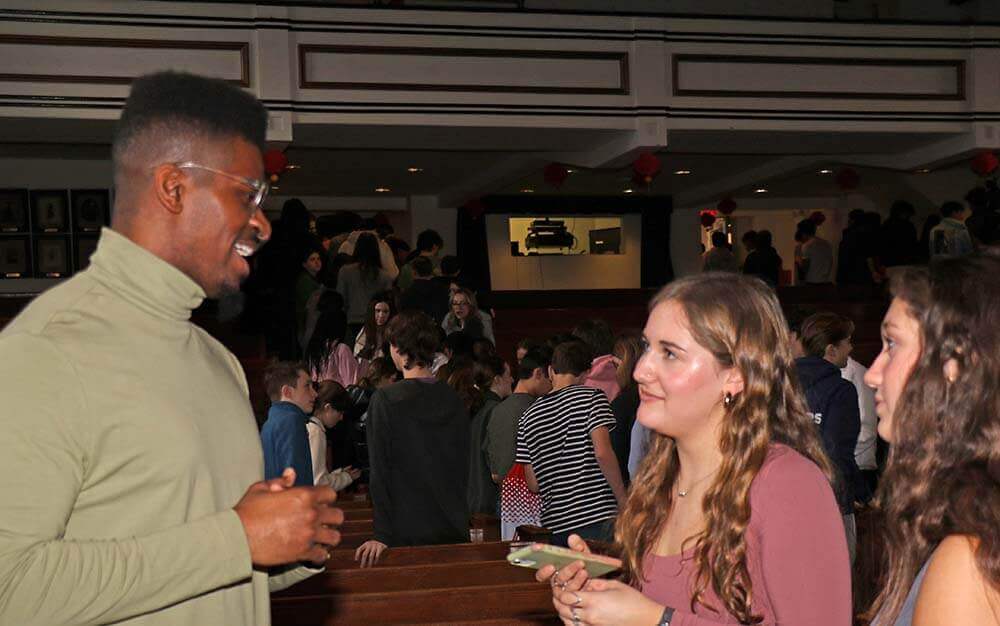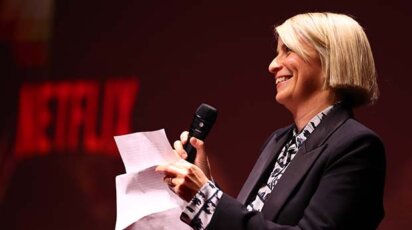News
It was great to have James Seaton ‘15 back at Poly to share an original spoken word poem, as he had done many times in Chapel as a student.

Seaton returned to speak on “Embracing Empathy” in the opening assembly of Poly Connected, a day of Middle and Upper School Diversity, Equity, Inclusion, and Belonging (DEIB) workshops on January 25. The focus of the day was: Building Community Through Extending Empathy, Exploring Intersectionality & Defining DEIB.
Interim Chair of the DEIB Department Erika Freeman P’24, ’26, ’28, ’32 welcomed Seaton and students to a special day of community. What’s really important at Poly? “DEIB is important,” Freeman said. “Community is very important.” She added, “You belong here and we belong together,” and continued, “We can only grow if we take time to recognize how we are different and connected.”
Seaton recalled sitting in the same Chapel benches not so long ago, and competing in the Bearns competition, before he was recruited as a track star to attend Cornell. After graduating with a bachelor’s degree in Communications, Seaton is now a Director at Group Gordon, a public relations firm, as well as a spoken word poet. “I love to use the powerful tool of words to reach people,” he said.
Embracing Empathy
Seaton began his presentation with his spoken word poem, “The Tree.” He asked students to think about what empathy is what it means to each of us.
“The problem with pain is that it doesn’t always make an audible sound. Sometimes it is quiet and cordially searching for an embrace. Sometimes it is so gentle and polite as to be at peace but there is always war beneath the surface.”
Excerpt from “The Tree”
Taking Action
Seaton said that part of the challenge to being empathetic is taking action. He posed the question, “How do we become ‘full story people’ instead of ‘headline people’?” He added, “Headlines don’t tell the whole story.” Empathetic people are “full story people,” he explained, and this takes “humility — being open to learning and not making assumptions based on past experience; listening — make initial observations; ask questions and listen to understand, not to debate; understanding — repeat back what you heard the person say to confirm that you have a full understanding; application — use what you’ve learned to inform a change in action.”
“The cost of caring is at an all time high and so is the importance.”
Excerpt from “The Tree”
A Scenario
Seaton presented a scenario about a school girl, Aaliyah, who has been ridiculed because of her hair. She approaches the student, Lily, who has made the comment, and tells her that she feels hurt. He added that the “full story” might be that Aaliyah wears her hair that way because that is the way her mother wears her hair – that it’s a part of who she is. This makes the comment by Lily even more hurtful. Based on the “full story” framework, how should Lily respond? Seaton asked students for their thoughts, and several responded that Lily should apologize and say she would not do it again. “Empathy,” Seaton reminded us, “results in compassionate behavior.” In school and beyond, empathy increases understanding, builds community, and promotes leadership.
Wish for Poly Community
“One interaction, conversation, or commitment can create a ripple effect, not just at Poly but in whatever space students find themselves in.”
James Seaton

Afterward, Seaton said, “The experience was amazing. I felt like I was back home. The love I felt from the community was overwhelming. I’m thankful to have had the opportunity to share my poetry and speak to students about empathy. Some students expressed appreciation for the presentation and still others shared that the actual implementation of empathy in the Poly community is challenging. The experience indicated to me that Poly had come far, but also had a long way to go in advancing diversity, equity, inclusion, and belonging. Just eight years ago I was in the same seats as those students, and I hope I ingrained in them the fact that they have the power to make everyone around them feel like they belong. One interaction, conversation, or commitment can create a ripple effect, not just at Poly but in whatever space students find themselves in.”

Asked what he noticed was the same and different about Poly, Seaton said, “I think the buildings and the environment have changed a little bit, but the students haven’t. The hallways are still bustling with the same loudness. Mayhem still ensues as students crowd into the deans’ offices to get their schedules. While I felt that all three groups of students I spoke to were engaged, I was surprised by the energy, enthusiasm, and participation of the Middle School students. A good 20 Middle School students ran to the mic to answer questions about what empathy is and how they might respond in a situation where empathy is required. That put a big smile on my face!”



